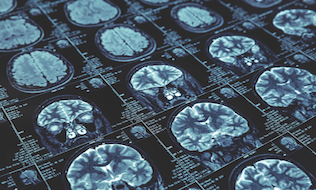

There has been much in the news these days about concussions in sports. But concussions and traumatic brain injuries can occur on or off the sports field and can have an impact on the workplace.
“For traumatic brain injury or concussion, there isn’t any common pattern,” says Sil Cabral, director of group life and disability at the Equitable Life Insurance Co. of Canada. “You see it from all sorts of areas. We have folks who’ve had multiple head injuries falling down the stairs in their homes. We’ve had other scenarios where it’s work-related, where they’re driving a work vehicle.”
When it comes to statistics, the Public Health Agency of Canada has predicted that, by 2031, the number of hospitalizations due to traumatic brain injuries will increase by 28 per cent in comparison to 2011. And as the numbers increase, so do the claims. According to data from the Workplace Safety and Insurance Board, there were 1,644 claims requiring time off work in Ontario in 2012, up from 790 in 1996.
Read: The need for a strategic response to absence management
Dr. Alain Sotto, an occupational medical consultant with the Toronto Transit Commission, notes physicians are doing a better job of identifying and screening for post-concussion syndrome. “You have the head injury and then the symptoms: dizziness, memory loss, fatigue, headaches. Post-concussion syndrome can even be so severe that it can include mental-health problems such as depression.”

Post-concussion syndrome can be particularly challenging for employers and insurers. “It’s very hard for the average insurance company when you say you have post-concussion syndrome when everything’s normal — the CT scan, the MRI — yet you’re still unable to attend work,” says Sotto. “It’s difficult for sick leave insurance companies to adjudicate. Your brain has shifted in a closed cavity, and those tiny shear forces cause the brain receptors not to fire in the same way they were before the head injury. That impacts memory, mood and function.”
Limited treatment options
In addition, there’s really no good treatment for concussions, according to Sotto. “There’s no actual medication you can take. You have pneumonia, you’re going to take antibiotics. This is different.”
Treatment for concussions means rest. “No computer screen, no visual stimuli, no multi-tasking, no sports,” says Sotto. It also means being off work, and the length of time an employee may need can range from weeks to months, he says.
Read: EPCOR Utilities wins award for absence management process
But even when an employee is ready to return to work, it should be a gradual process. “We try to accommodate the employee working with their physician as far as their restrictions are concerned,” says Sotto. The TTC has a graduated return-to-work program, so employees may work four hours per day for two weeks, for example, and then increase that to five hours in the third week. They’d then continue to increase their hours until they’re back to a full-time schedule.
Although keeping absences to a minimum is an important goal, Cabral says there’s a risk if an employee returns to work too early after the incident. “Everyone might have the best intentions, but they may be unintentionally pushing the person to activities that may be too demanding, stressful from a cognitive perspective,” he says. “[The employee] may be leaving very exhausted and they may be forgetting things.”
Read: How to use data to address workplace absence
But Sotto says it’s not just about employees returning to work too soon, as it’s also important to ensure they come back to the right job. “If the employee had a physical job, we would try to put them in . . . a more paper-oriented or sedentary job.”
Sotto emphasizes that concussions are an area that’s still evolving. “We have to come up with more research on how we can make it better for people so they can come back to their regular functioning.”
Brooke Smith is a Toronto-based freelance writer and editor.
Get a PDF of this article.
